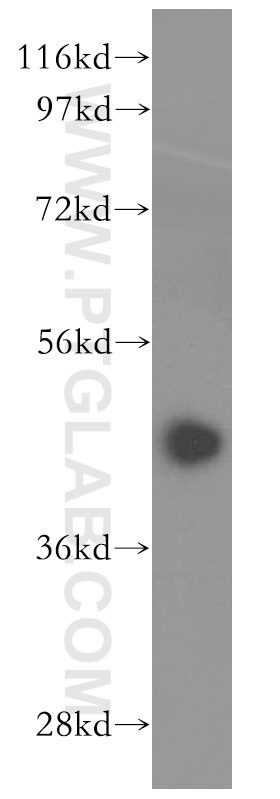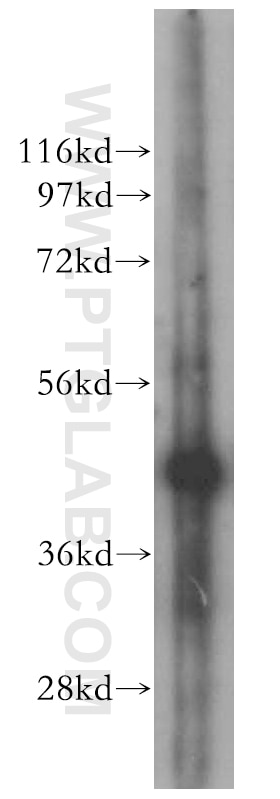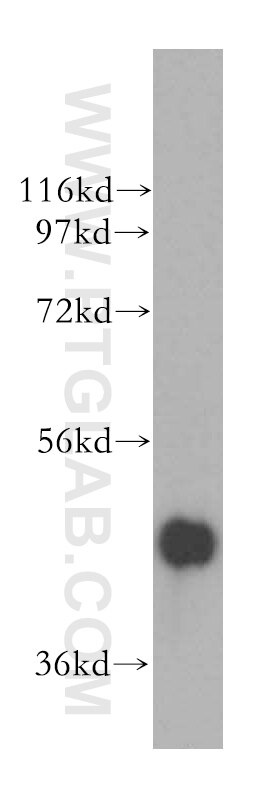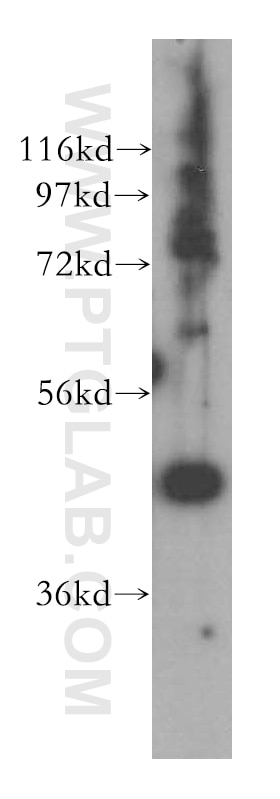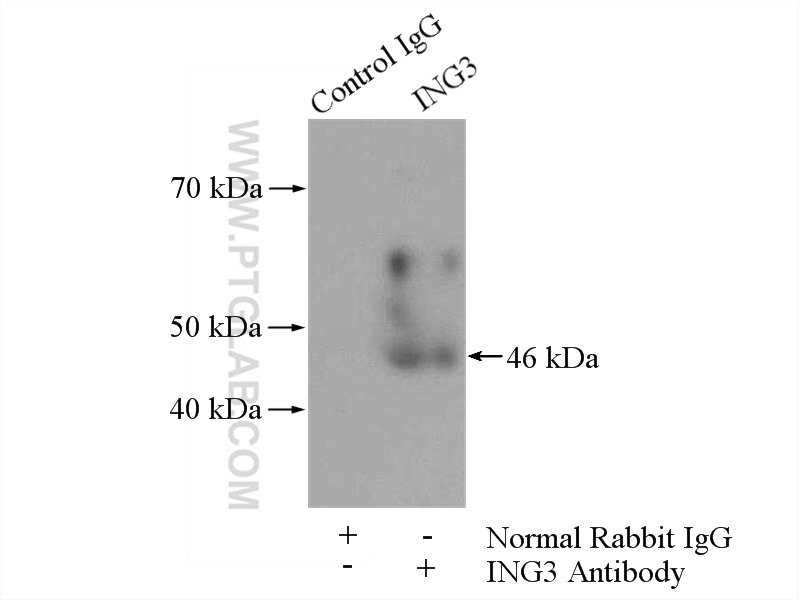Validation Data Gallery
Tested Applications
| Positive WB detected in | human kidney tissue, mouse heart tissue, mouse kidney tissue, mouse liver tissue |
| Positive IP detected in | mouse kidney tissue |
Recommended dilution
| Application | Dilution |
|---|---|
| Western Blot (WB) | WB : 1:500-1:2400 |
| Immunoprecipitation (IP) | IP : 0.5-4.0 ug for 1.0-3.0 mg of total protein lysate |
| It is recommended that this reagent should be titrated in each testing system to obtain optimal results. | |
| Sample-dependent, Check data in validation data gallery. | |
Product Information
16187-1-AP targets ING3-specific in WB, IP, ELISA applications and shows reactivity with human, mouse, rat samples.
| Tested Reactivity | human, mouse, rat |
| Host / Isotype | Rabbit / IgG |
| Class | Polyclonal |
| Type | Antibody |
| Immunogen | Peptide 相同性解析による交差性が予測される生物種 |
| Full Name | inhibitor of growth family, member 3 |
| Calculated molecular weight | 47 kDa |
| Observed molecular weight | 46 kDa |
| GenBank accession number | NM_019071 |
| Gene Symbol | ING3 |
| Gene ID (NCBI) | 54556 |
| RRID | AB_2264993 |
| Conjugate | Unconjugated |
| Form | Liquid |
| Purification Method | Antigen affinity purification |
| UNIPROT ID | Q9NXR8 |
| Storage Buffer | PBS with 0.02% sodium azide and 50% glycerol , pH 7.3 |
| Storage Conditions | Store at -20°C. Stable for one year after shipment. Aliquoting is unnecessary for -20oC storage. |
Background Information
Members of inhibitor of growth (ING) family function in inhibiting cell growth and inducing apoptosis. They are sequence homologous proteins. ING3 can activate p53 trans-activated promoters, including promoters of p21/waf1 and bax. This antibody is specifically against p47ING3.
Protocols
| Product Specific Protocols | |
|---|---|
| WB protocol for ING3-specific antibody 16187-1-AP | Download protocol |
| IP protocol for ING3-specific antibody 16187-1-AP | Download protocol |
| Standard Protocols | |
|---|---|
| Click here to view our Standard Protocols |
